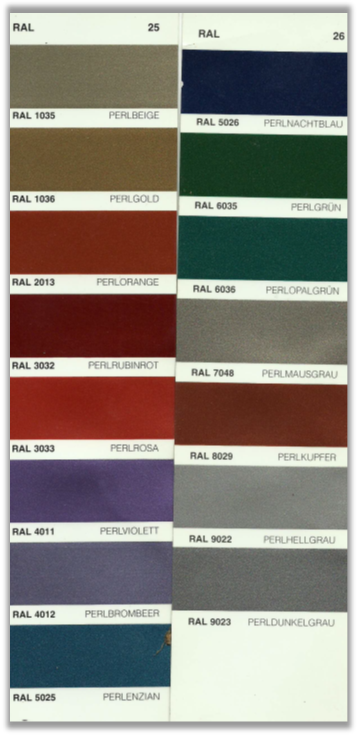Ral Colors, Charts & Database
RAL is a German color matching system that is widely used in Europe and globally for various applications, including in the fields of architecture, construction, industry, and design. The system was developed by RAL Deutsches Institut für Gütesicherung und Kennzeichnung e.V., established in 1927.
Key aspects of the RAL color system include:
Standardized Color Palette: RAL provides a standardized color system, similar to Pantone, which allows for consistent and precise color reproduction. Each color in the RAL system is assigned a unique code, typically consisting of a four-digit number, making it easy to identify and match colors across different materials and applications.
RAL Classic and RAL Design: The RAL system includes two main collections - RAL Classic and RAL Design. The RAL Classic collection, the more commonly used of the two, consists of 213 colors and is widely used for applications like varnish and powder coating. The RAL Design system is more extensive, with around 1,625 colors, and is geared more towards architects, designers, and advertisers.
Wide Range of Applications: RAL colors are used in a variety of industries, including construction, automotive, and furniture. It's particularly popular for specifying paint colors in architecture and for industrial coatings.
Global Recognition and Use: While RAL is a German system, it has gained wide recognition and is used globally. Its standardized nature makes it a reliable system for specifying colors in international products and designs.
Color Samples and Tools: RAL provides physical color samples and guides, which are essential tools for designers, architects, and manufacturers in ensuring color accuracy and consistency. They also offer digital solutions for color matching.
Influence in Design and Manufacturing: RAL colors are often specified in technical documentation and product design, making them an integral part of the manufacturing and design processes in various industries.
RAL's importance lies in its ability to provide a standardized color language that ensures consistency and accuracy in the use of color across different sectors and international borders. This makes it a valuable tool for professionals in various industries where precise color matching is crucial.
Ral Yellow/Oranges
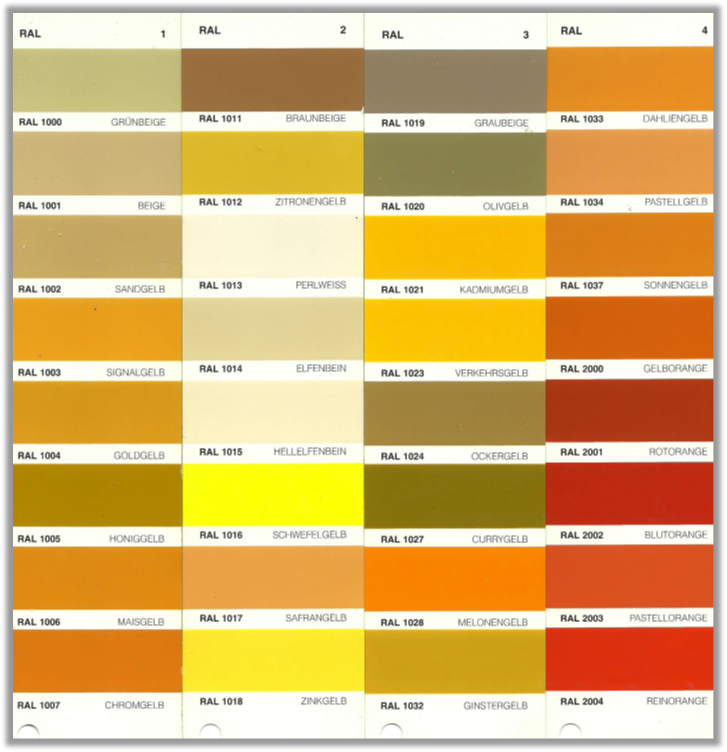
Ral Reds
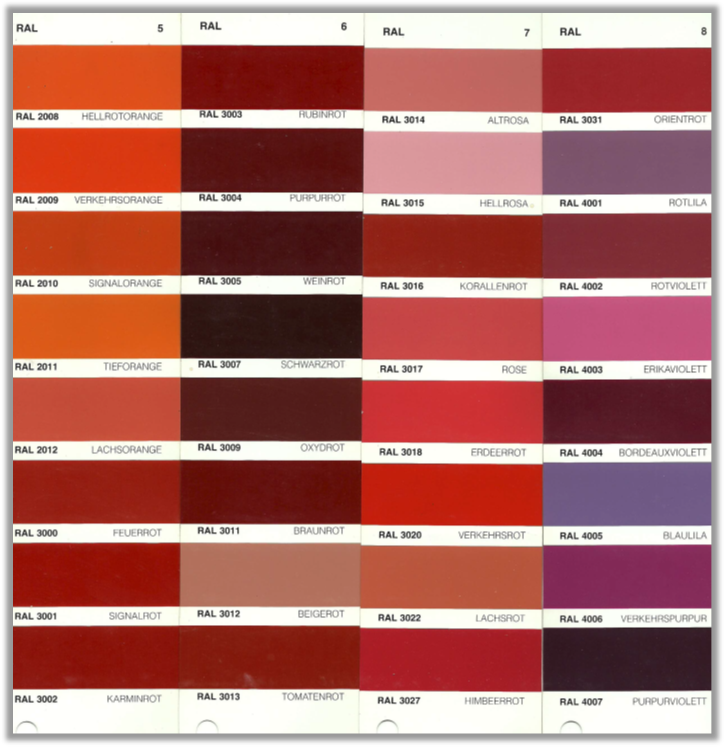
Ral Blues
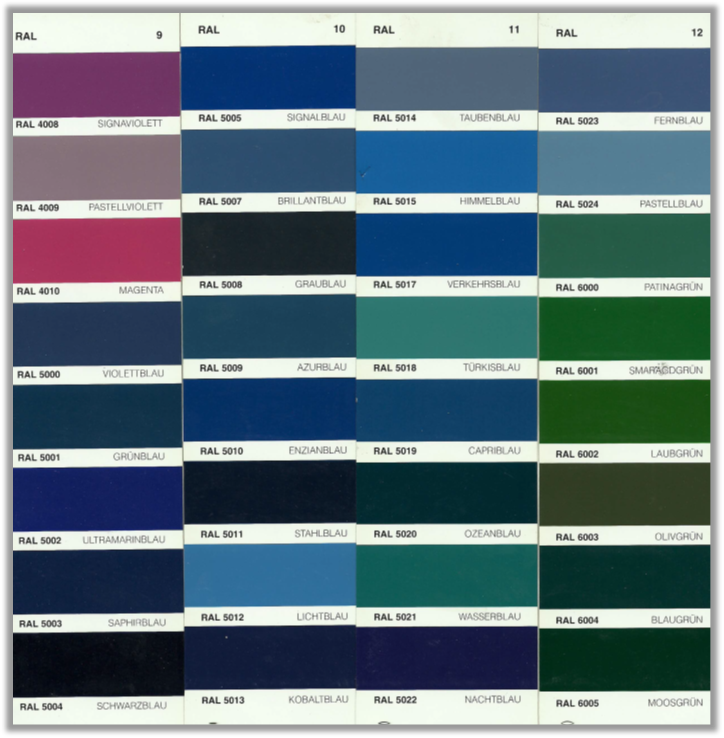
Ral Greens
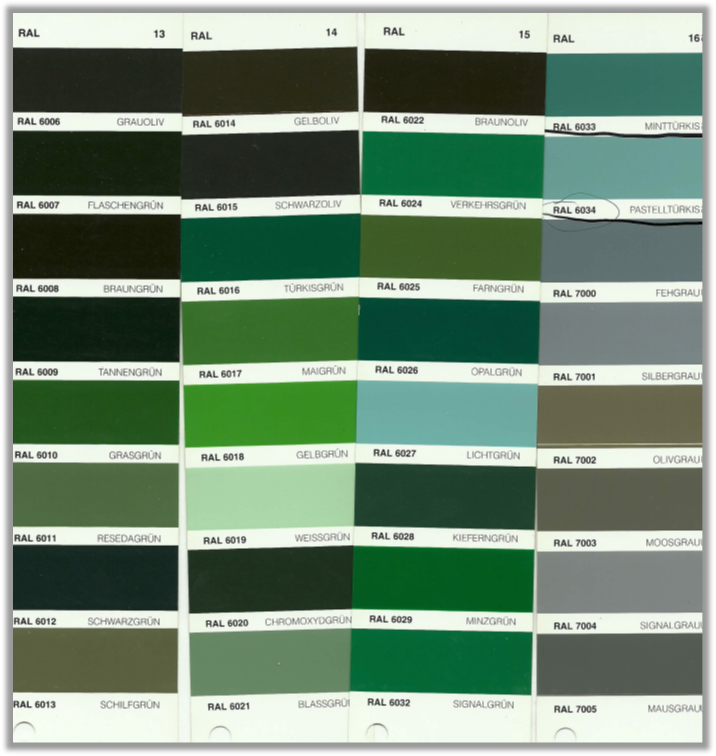
Ral Neutrals
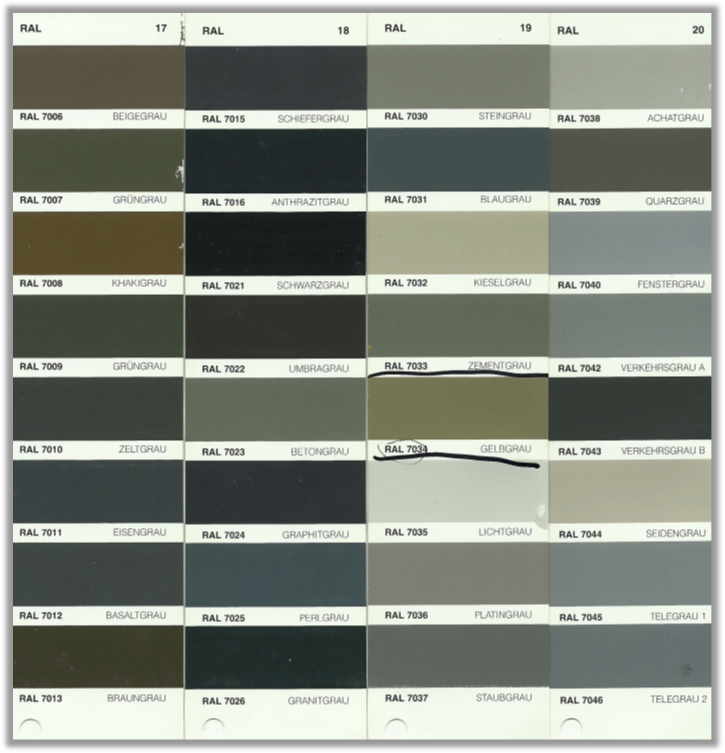
Ral Browns, Whites
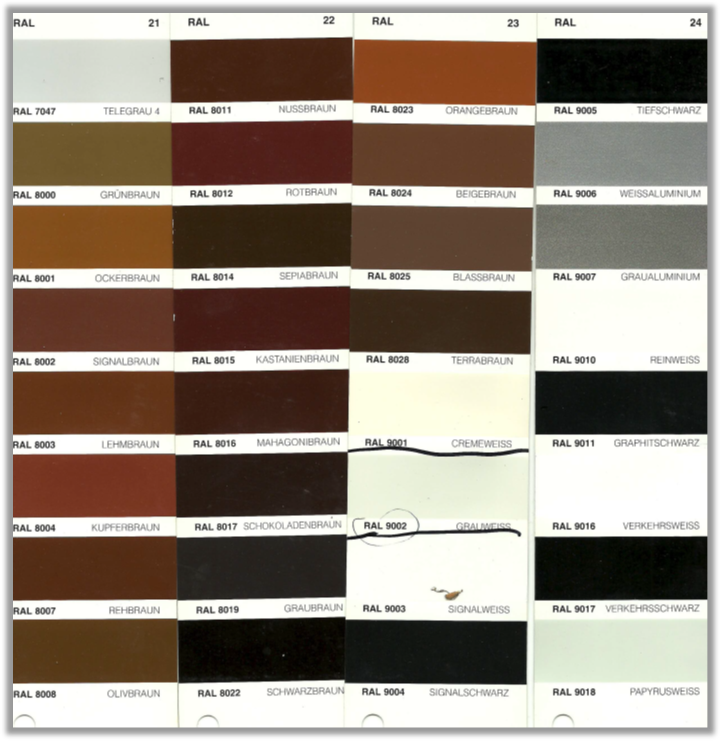
Ral Metallics
